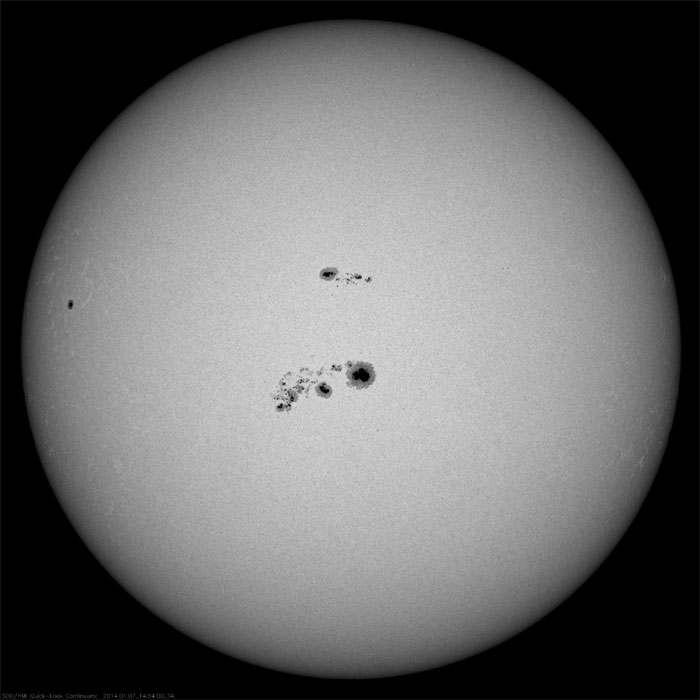.

One of the largest sunspots in the last nine years, labeled AR1944, was seen in early January 2014, as captured by NASA's Solar Dynamics Observatory. An image of Earth has been added for scale.
Image Credit: NASA/SDO
.
An enormous sunspot, labeled AR1944, slipped into view over the sun's left horizon late on Jan. 1, 2014. The sunspot steadily moved toward the right, along with the rotation of the sun, and now sits almost dead center, as seen in the image above from NASA's Solar Dynamics Observatory.
Sunspots are dark areas on the sun's surface that contain complex arrangements of strong magnetic fields that are constantly shifting. The largest dark spot in this configuration is approximately two Earths wide, and the entire sunspot group is some seven Earths across. For comparison, another giant sunspot, five to six Earths across, is shown below from 2005. The image was captured by the European Space Agency and NASA's Solar and Heliospheric Observatory.
.

A giant sunspot group sits at the center of the sun on Jan. 7, 2013 as seen by SDO's Helioseismic and Magnetic Imager instrument.
Image Credit: NASA/SDO
.

Two of the largest sunspots in the last nine years: the one on the left is from Jan. 17, 2005, captured by ESA/NASA's Solar Heliospheric Observatory; the one on the right is from Jan. 7, 2014, captured by NASA's Solar Dynamics Observatory.
Image Credit: ESA/NASA SOHO and NASA SDO
.
Sunspots are part of what's known as active regions, which also include regions of the sun's atmosphere, the corona, hovering above the sunspots. Active regions can be the source of some of the sun's great explosions: solar flares that send out giant bursts of light and radiation due to the release of magnetic energy, or coronal mass ejections that send huge clouds of solar material out into space. As the sunspot group continues its journey across the face of the sun, scientists will watch how it changes and evolves to learn more about how these convoluted magnetic fields can cause space weather events that can affect space-borne systems and technological infrastructure on Earth.
.

This pictures combines two images from NASA's Solar Dynamics Observatory captured on Jan. 7, 2013. Together, the images show the location of a giant sunspot group on the sun, and the position of an X-class flare that erupted at 1:32 p.m. EST.
Image Credit: NASA/SDO
Quelle: NASA
5158 Views
